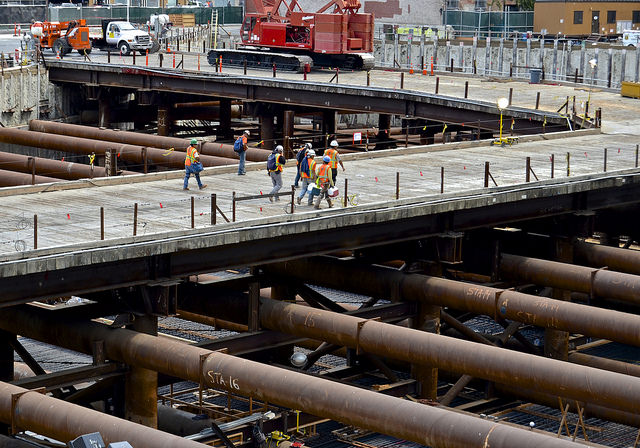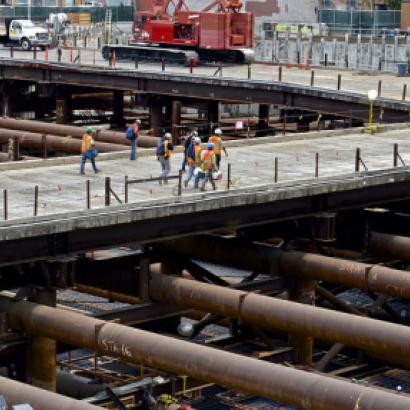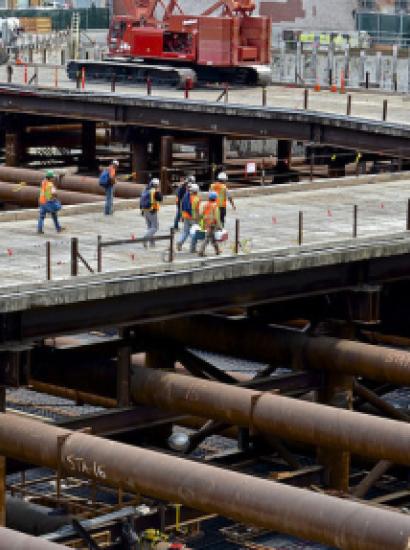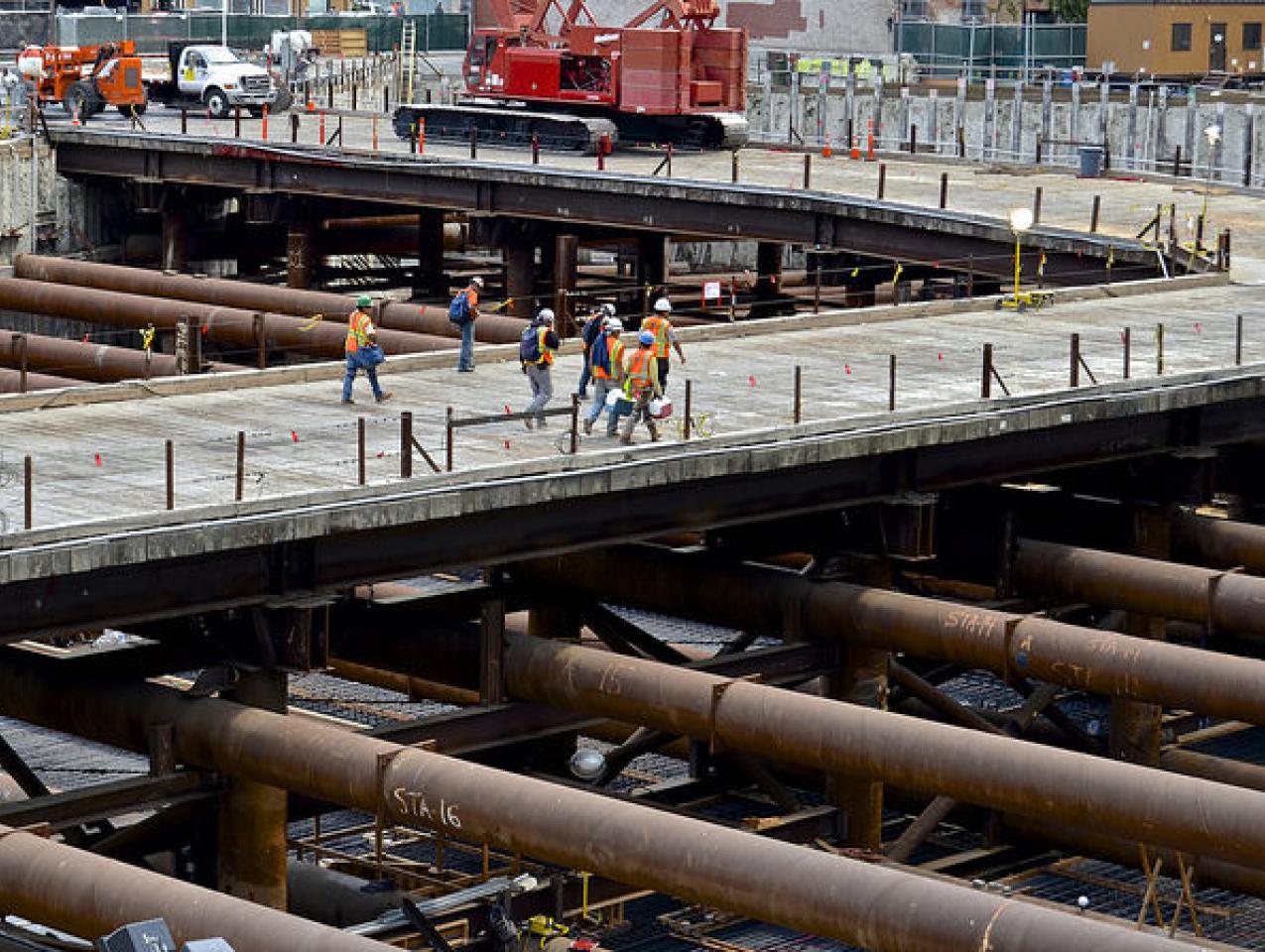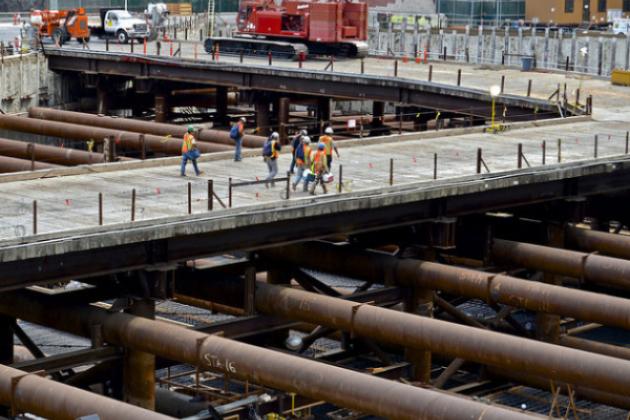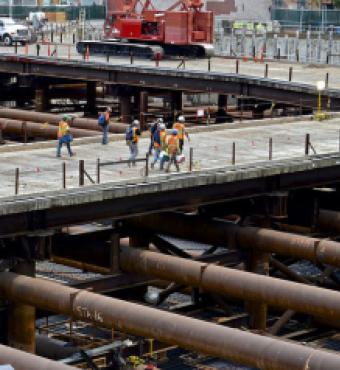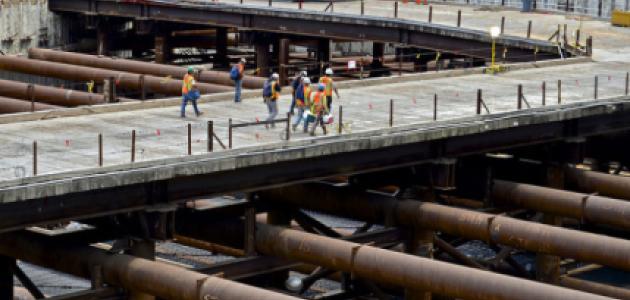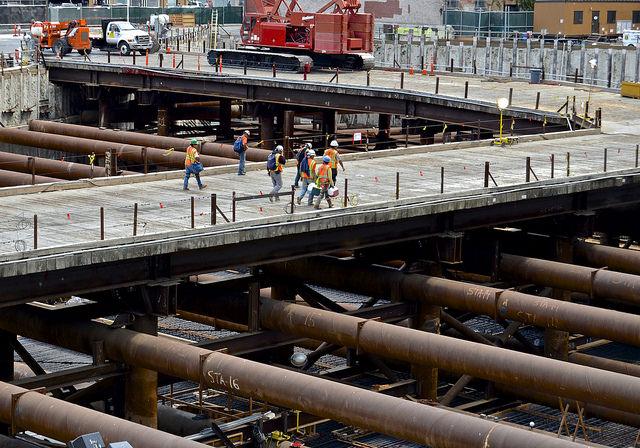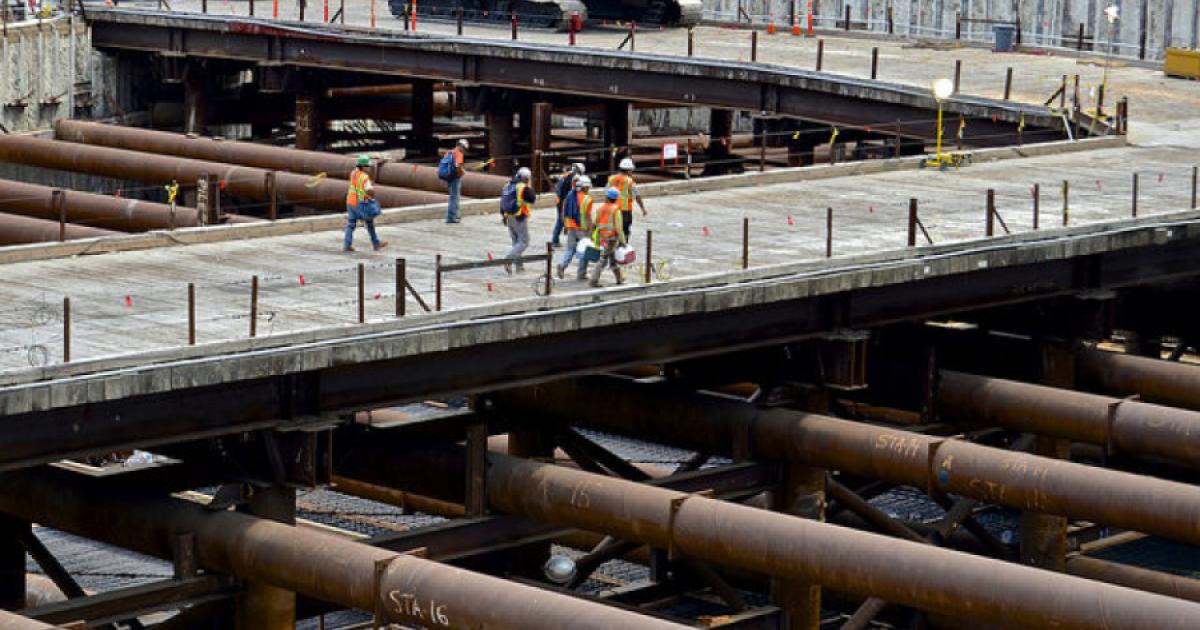- Politics, Institutions, and Public Opinion
On the campaign trail, Hillary Clinton and Donald Trump have been claiming that the United States needs more and better infrastructure. Like many other politicians before them, they say that infrastructure creates economic growth and jobs; they argue that we have too little of it; and they believe it must be provided by government. The truth is, though, that U.S. infrastructure ranks near the top in the world.
No matter: the political script is that we need more government spending on infrastructure, and we need it now. Democrats call for a publicly funded infrastructure bank to address America’s “crumbling” infrastructure. A crisis is ginned up to demonstrate that current levels of infrastructure spending are woefully inadequate. Public spending lobbyists oblige with D+ report cards for aging and unreliable roads, bridges, and ports. The 15,000 transportation lobbyists in DC routinely contribute huge amounts to politicians on both sides of the aisle. Opponents of infrastructure spending are decried as wanting to poison grandma with polluted water and send school buses over the guard rails of decaying roads. Good people want good roads, safe bridges, and clean drinking water, but not these tight-fisted deficit hawks.
Hillary Clinton’s campaign calls for a substantial increase in infrastructure spending as a down payment on what she terms the national emergency of our failing infrastructure. As candidate Clinton warns: “We have bridges that are right now too dangerous to drive on, although people take a deep breath and drive across them. We have roads that are so riddled and pitted and potholed that people driving them are having to pay hundreds of dollars to repair the damage. We have airports that are stuck in the mid-20th century instead of the 21st century. We have water systems that are unsafe for children to drink the water from.”
Clinton promises to send a $275 billion infrastructure spending bill to Congress in her first one hundred days of office. In her campaign stops, she invites voters to dream of the hundreds of thousands of jobs that her infrastructure spending will create. Her promised infrastructure boondoggle has drawn Donald Trump into the bidding game with an unseemly pledge to double Clinton’s program. Trump should stick to attacking regulation and tax reform rather than aping her public spending giveaways.
Before embarking on an infrastructure spending spree we should answer three questions. First, what is the actual state of our infrastructure? How do our roads, utilities, telecommunications, and airports compare to other affluent countries? Second, have we created an infrastructure deficit by underspending? Are we indeed spending too little? Third, if so, how much spending is needed to bring infrastructure up to “international standards.”
First: How does U.S. infrastructure rank?
Advocates of infrastructure spending point to the glistening glass and steel of United Arab Republics’ futuristic airports, of French and Japan’s bullet-trains reaching 200 miles per hour, and of Germany’s dense autobahn network. Surely, they argue, the United States must be an infrastructure laggard when compared to these masterpieces of twenty-first century technology and innovation. But are these images representative? The United States is a country of almost four million square miles. Of course, it will have some shaky bridges, potholed roads, and suspect water systems. It has 600,000 bridges. But over the past 65 years, only 45 bridges have collapsed for an infinitesimal annual failure rate.
The latest tally of the widely-cited World Economic Forum’s (WEF) ranks U.S. infrastructure in eleventh place, behind countries like Singapore, Hong Kong, Germany, France, and even Spain. But, at eleventh place, the U.S. ranks ahead of Canada, Austria, Australia, and Scandinavia—no slouches in infrastructure. The WEF’s U.S. ranking is artificially depressed, first, by America’s low cell phone subscriptions per capita. (The United States and Albania have about the same number due to the lack of fixed line service in poor countries). Second, the WEF ranking is determined by “experts” from each country, who provide subjective scores (ranging from 1 to 7) for each component of the index. Will the 369 country specialists from the United States evaluate U.S. infrastructure by the same standards as the 100 experts from Egypt or the 39 from Haiti?
In its New Global Index of Infrastructure, the prominent Kiel Institute for the World Economy has constructed an alternate infrastructure index, based on facts rather than expert opinions. The Kiel results are strongly correlated with the WEF’s, but the two differ on the U.S. ranking. WEF ranks the U.S. at eleventh place, while Kiel ranks it at fourth behind Hong Kong, Singapore, and Germany. The first two are city states, which face lesser infrastructure challenges. Among nation states, therefore, the United States comes in at number two just behind Germany.
If the Clinton campaign’s assertion that U.S. infrastructure is “crumbling” and the Kiel Institute’s numbers are correct, citizens of Switzerland, Canada, Luxembourg, Japan, UK, France, Korea and Sweden should worry out loud about their more decrepit and dangerous infrastructure collapse. Strange that such voices are silent.
The second question is: Does the U.S. spend too little on infrastructure?
The U.S. infrastructure crisis claimed by Clinton must be the result of too little cumulated spending relative to other countries. But that’s not the case. According to OECD statistics, the United States spent 3.2 percent of its GDP (2001-2011) on public investment versus the European Union’s 3.0 percent. With roughly equal GDPs, the United States actually outspent the European Union—the model of infrastructure that our politicians frequently praise. What’s more, the newly-published McKinsey Global Institute’s Bridging Global Infrastructure Gaps confirms that U.S. government investment (as a percent of GDP) has outpaced Japan, the UK, and Europe since 2000, and that the United States and Canada combined have spent equal shares of GDP on infrastructure as Western Europe from 1992 to 2013.
The question, though, is how that money is spent. In both the United States and Europe, public investment and procurement are political processes characterized by waste and corruption. If we get less bang per buck from our infrastructure dollar than other nations, our problem is not too few dollars but too few dollars efficiently spent. We need fewer bridges to nowhere and less money spent on propping up failing green businesses and public employee pensions.
Finally, how much should we spend on infrastructure?
The McKinsey report estimates that the world needs to increase its 2015-2030 infrastructure spending from its current $2.5 trillion to $3.3 trillion per year to achieve a GDP growth rate of 3.5 percent. In other words, the world economies need to raise infrastructure spending by $0.8 trillion per year for the next 15 years for a total of $12 trillion, or 15 percent of world GDP.
McKinsey, however, recommends that virtually all of the increased infrastructure spending go to those poor countries with alarming infrastructure deficits. In fact, McKinsey offers a list of countries whose current spending levels are sufficient to produce robust growth rates, among them the United States. The United States has a thirty percent surplus between current rates of infrastructure spending and infrastructure spending needs between now and 2030. In other words, we do not need an infrastructure bank and a stimulus disguised as infrastructure. We are already spending enough.
The American Society of Civil Engineers does not agree with McKinsey. Our civil engineers have decided that the United States must spend $3.4 trillion between now and 2030 to correct our infrastructure deficit. If our civil engineers had their way, the U.S. would gobble up 30 percent of the world’s extra infrastructure spending that McKinsey says should go to the developing world. Asking the civil engineers how much infrastructure spending we need is akin to asking defense contractors how much we should spend to keep America safe.
If Hillary Clinton were indeed a citizen of the world, she would direct our infrastructure spending surplus to less fortunate countries not to her campaign contributors. Our builders, construction workers, and infrastructure lobbyists may not understand, but it would be the right thing to do.







